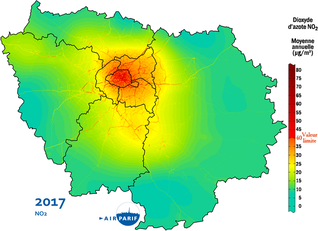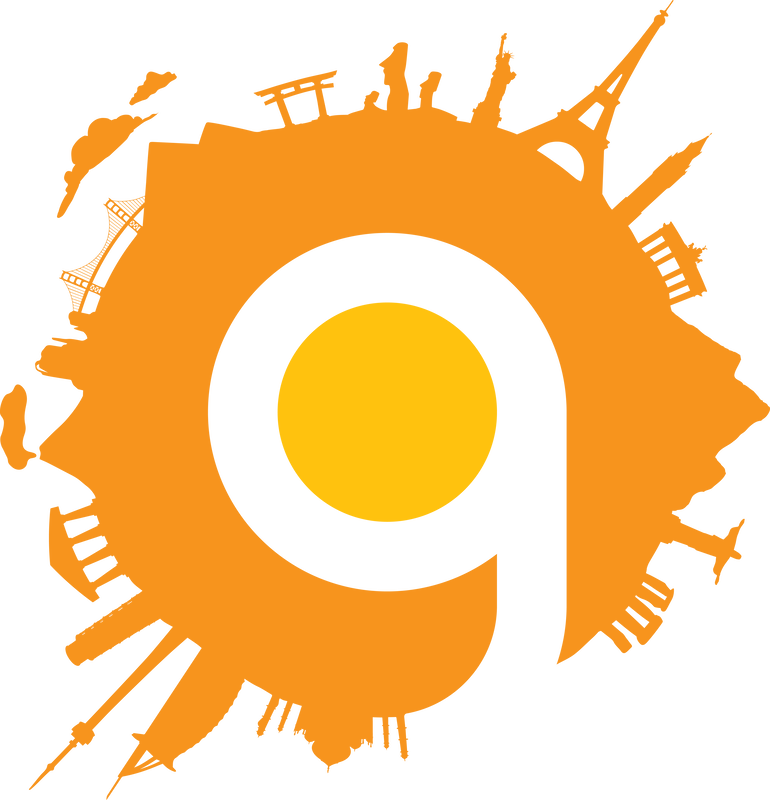KEY CONCEPT - The varying power of different stakeholders in relation to the experience of, and management of, urban stresses
Urban microclimate modification and management, including the urban heat island effect, and air pollution patterns and its management
Traffic congestion patterns, trends and impacts
Contested land use changes, including slum clearances, urban redevelopment and the depletion of green space
Managing the impacts of urban social deprivation, including the cycle of deprivation and geographic patterns of crime
Urban microclimate modification and management, including the urban heat island effect, and air pollution patterns and its management
- Case study of air pollution in one city and its varying impact on people
Traffic congestion patterns, trends and impacts
- Case study of one affected city and the management response
Contested land use changes, including slum clearances, urban redevelopment and the depletion of green space
- Detailed contrasting examples of two affected neighbourhoods and their populations
Managing the impacts of urban social deprivation, including the cycle of deprivation and geographic patterns of crime
Urban Microclimates & Urban Heat Island Effect...
A microclimate is the distinctive climate of a small-scale area, such as a garden, park, valley or part of a city. The weather variables in a microclimate, such as temperature, rainfall, wind or humidity, may be subtly different from the conditions prevailing over the area as a whole and from those that might be reasonably expected under certain types of pressure or cloud cover. Indeed, it is the amalgam of many, slightly different local microclimates that actually makes up the microclimate for a town, city or wood.
It is these subtle differences and exceptions to the rule that make microclimates so fascinating to study, and these notes help to identify and explain the key differences which can be noticed by ground-level observations (source metlink.org
|
|
|
The urban area modifies the climate in several ways: temperature, precipitation, fogs, thunderstorms, winds & pollution. Use the following PDF document from the Met Office (UK) from page 15 onward to complete the tasks on the worksheet.
Air Pollution & Congestion in Paris - A Case Study...
|
|
|
We are going to be combining two case studies into one here so that we have a single linked case study for air pollution and congestion. Use the embedded worksheet above to record your tasks.
Background Task - Watch the first 7.30 of the first video above on congestion and make notes on your worksheet. Repeat the task for the second video on air pollution.
Introducing the Study Area
Paris is the capital city of France and the biggest city in Europe with a metropolitan population of over 12 million people. It is the most visited city in the world with the number of visitors surpassing the 40 million mark in 2017! For the past 10 years, Paris has struggled with high levels of air pollution (Nitrogen/CO2 and Diesel Particulates) not seen on this scale in Europe since the peak of the industrial age. Although the recent Covid-19 outbreak has brought Paris to a standstill, life is starting to resume and air pollution levels are on the rise too
This section of work will take a look at the causes and responses that have been put into place to protect those who live and visit the city every year.
Task 1 - Click on this link to be taken to some headline statistics on traffic congestion today and historically. Make a note of some of the major findings (in terms of % of extra travel time) and comment on the graph that shows congestion statistics over time including the excellent section at the bottom about how you could have used the time lost spent in traffic jams!
Task 2 - Complete on the worksheet (at the top of this section).
Background Task - Watch the first 7.30 of the first video above on congestion and make notes on your worksheet. Repeat the task for the second video on air pollution.
Introducing the Study Area
Paris is the capital city of France and the biggest city in Europe with a metropolitan population of over 12 million people. It is the most visited city in the world with the number of visitors surpassing the 40 million mark in 2017! For the past 10 years, Paris has struggled with high levels of air pollution (Nitrogen/CO2 and Diesel Particulates) not seen on this scale in Europe since the peak of the industrial age. Although the recent Covid-19 outbreak has brought Paris to a standstill, life is starting to resume and air pollution levels are on the rise too
This section of work will take a look at the causes and responses that have been put into place to protect those who live and visit the city every year.
Task 1 - Click on this link to be taken to some headline statistics on traffic congestion today and historically. Make a note of some of the major findings (in terms of % of extra travel time) and comment on the graph that shows congestion statistics over time including the excellent section at the bottom about how you could have used the time lost spent in traffic jams!
Task 2 - Complete on the worksheet (at the top of this section).
The Causes
Task 3 & 4 - Watch the first video above (in French) and the second one (in English) and make notes on the worksheet of the physical and human causes of the high air pollution levels in Paris. How does the map of Paris above help to identify what the main issue could be?
What is the situation today (live)?
Check out this site to see what the air quality situation is in Paris.
Task 5 - Complete on the worksheet.
The Impacts & Responses
Task 6 & 7 - You will be choosing two schemes to analyse (POWER) from the four possible ones beneath. (our you could work in groups of 4 so that you have one each). Use the evidence board below to create a series of notes that aims to show the impacts of poor how Paris is trying to tackle the issue of poor air quality. Use the last two pages on your worksheet.
|
Crit Air Stickers
|
Car Free Day - Paris
|
Free Public Transport
|
Vertical Gardens
|
Contested Land Use Changes - Addis Ababa...
In the previous sub-unit of work, we studied infrastructure growth over time in Addis Ababa and we return to the capital of Ethiopia once again for a case study that aims to show the contested issue of land use change in the city. This covers slum clearances, urban redevelopment and the depletion of green space.
You have a thorough understanding of the growth of Addis Ababa and it's associated infrastructure. You also have a wider overview of the country in terms of its energy potential (GERD - Freshwater). In this lesson, we will look at the lives of people in contrasting areas of the city and how their lives have been affected by schemes designed to reduce urban stress and improve economic development.
Starter - Take a good long look around at the Google Panoramic image beneath showing a central area in Addis Ababa. Zoom in carefully and see if you can identify possible stresses within the city and areas that could be classified as contested land.
You have a thorough understanding of the growth of Addis Ababa and it's associated infrastructure. You also have a wider overview of the country in terms of its energy potential (GERD - Freshwater). In this lesson, we will look at the lives of people in contrasting areas of the city and how their lives have been affected by schemes designed to reduce urban stress and improve economic development.
Starter - Take a good long look around at the Google Panoramic image beneath showing a central area in Addis Ababa. Zoom in carefully and see if you can identify possible stresses within the city and areas that could be classified as contested land.
Video Resources
|
|
|
|
|
|
Newspaper Resources (click to access the resource)
Loss of Green Space
Task 1 - To put together a comprehensive note taking exercise to answer the following IB Geography Paper 1 style question:
Examine the patterns of urban stress that have developed within one named city as a result of contested land use changes (10)
You might want to use the framework research sheet below.
Managing the impacts of urban social deprivation...
Check out this rather unremarkable locality of Detroit. The Streetview image was taken in May 2019. What do you see? Take a good look around.
Now, click on 'view on Google Maps' and use the time slider device to 2018, 2013, 2011, 2009 & 2007. What evidence can you see of urban social deprivation?
Check out this article for more images in and around Detroit.
We have studied Detroit in the previous sub unit as a case study for the impacts of deindustrialization on a city. If you need a refresher of the content, this link from the New York Times is a good place to start.
Managing Crime in Detroit
Task 1 - You previously studied the cycle of deprivation model (urban deindustrialization) and should be able to apply the reasons for this to the city of Detroit. You can remind yourself of the situation by reading this PDF report (source).
Task 2 - This link has lots of data about crime patterns in Detroit. Study the embedded heat map carefully as well as the graphs beneath. Take notes on the key data surrounding crime in Detroit.
Task 3 - Now visit this live crime map of Detroit. This will show you incidences of crime in the last 7 days (from the day you access the site). Use the menu to search the patterns of different types of crime. Make a note of the number of recorded cases of homicide in the last 7 days.
Task 2 - This link has lots of data about crime patterns in Detroit. Study the embedded heat map carefully as well as the graphs beneath. Take notes on the key data surrounding crime in Detroit.
Task 3 - Now visit this live crime map of Detroit. This will show you incidences of crime in the last 7 days (from the day you access the site). Use the menu to search the patterns of different types of crime. Make a note of the number of recorded cases of homicide in the last 7 days.
Crime issues in Detroit The Solutions in Detroit What do the people think.
|
|
|
|
The map below shows Green Light Partners around the city of Detroit.
Task 4 - Are there patterns between the locations of Green Light Partners and certain types of crime as indicated by the live map in Task 3?
Task 4 - Are there patterns between the locations of Green Light Partners and certain types of crime as indicated by the live map in Task 3?
Exam Corner
Evaluate the responses (power) to urban deprivation and their impacts in one urban area. (10)





